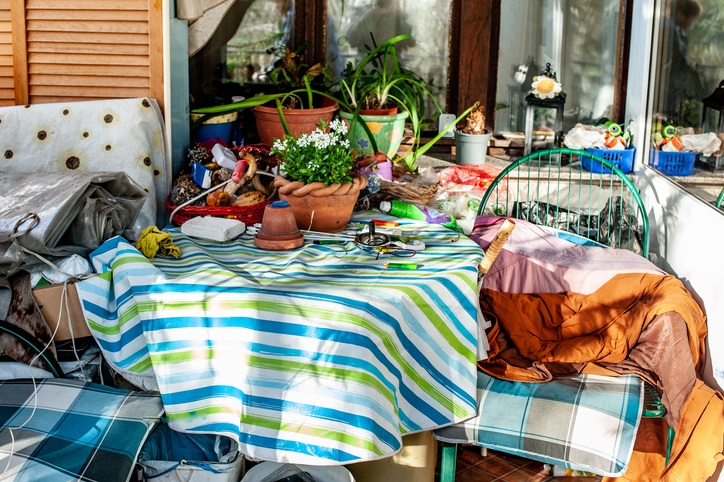
Hoarding disorder (HD) is a mental health condition characterized by the inability to part with or throw away items due to a perceived need to save them.
People diagnosed with HD accumulate an excessive amount of possessions regardless of value. Unlike collectors who collect specific types of items such as model cars, those who hoard acquire random items that are often useless or of little value to most people such as paper bags. This acquisition often results in disorganized piles of objects overcrowding living spaces. Some people who hoard may also begin to acquire living things such as animals, resulting in unsanitary living conditions.
Common reasons why people who hoard accumulate these possessions include:
- Not wanting to be wasteful and believing items will be needed in the future
- Feeling safe when surrounded by items
- Holding on to items perceived to have emotional significance
- Believing their items are unique
Symptoms of hoarding typically begin to present during an individual’s early teenage years, the average onset is 13 years old. As a person ages, symptoms often become more severe. According to the Anxiety and Depression Association of America, symptoms can include:
- Severe anxiety when attempting to discard items
- Great difficulty categorizing or organizing possessions
- Distress, such as feeling overwhelmed or embarrassed by possessions
- Suspicion of other people touching items
- Obsessive thoughts and actions: fear of running out of an item or of needing it in the future; checking the trash for accidentally discarded objects
- Functional impairments, including loss of living space, social isolation, family or marital discord, financial difficulties, health hazards
Although the cause of hoarding disorder is unknown, there are several factors that put some at risk of developing this condition more than others. The risk factors include having a family history of HD, encountering stressful or traumatic life events, having an indecisive personality, receiving brain injuries or experiencing material deprivation such as childhood poverty.
Those living with hoarding disorder are often likely to have other mental health conditions such as depression, anxiety, obsessive-compulsive disorder (OCD), attention deficit /hyperactivity disorder (ADHD) or alcohol use disorder.
People with hoarding disorder typically do not recognize hoarding as a problem; therefore, many do not seek the help they need. Hoarding disorder is often identified when individuals seek treatment for other mental health conditions or when loved ones or local health departments intervene.
Hoarding disorder is diagnosed by performing a psychological examination. The most common form of therapy used to treat hoarding disorder is cognitive behavioral therapy. This kind of therapy helps individuals to become aware of harmful thought and behavioral patterns, and develop new strategies to engage in healthier ways of thinking and behaving. Treatment of HD may also involve learning organizational and decision making skills, as well as medication therapy.
If you or someone you know are experiencing symptoms of hoarding disorder and would like to receive assistance from a mental health professional at Flushing Hospital Medical Center, please call 718-670-5562.
All content of this newsletter is intended for general information purposes only and is not intended or implied to be a substitute for professional medical advice, diagnosis or treatment. Please consult a medical professional before adopting any of the suggestions on this page. You must never disregard professional medical advice or delay seeking medical treatment based upon any content of this newsletter. PROMPTLY CONSULT YOUR PHYSICIAN OR CALL 911 IF YOU BELIEVE YOU HAVE A MEDICAL EMERGENCY.
